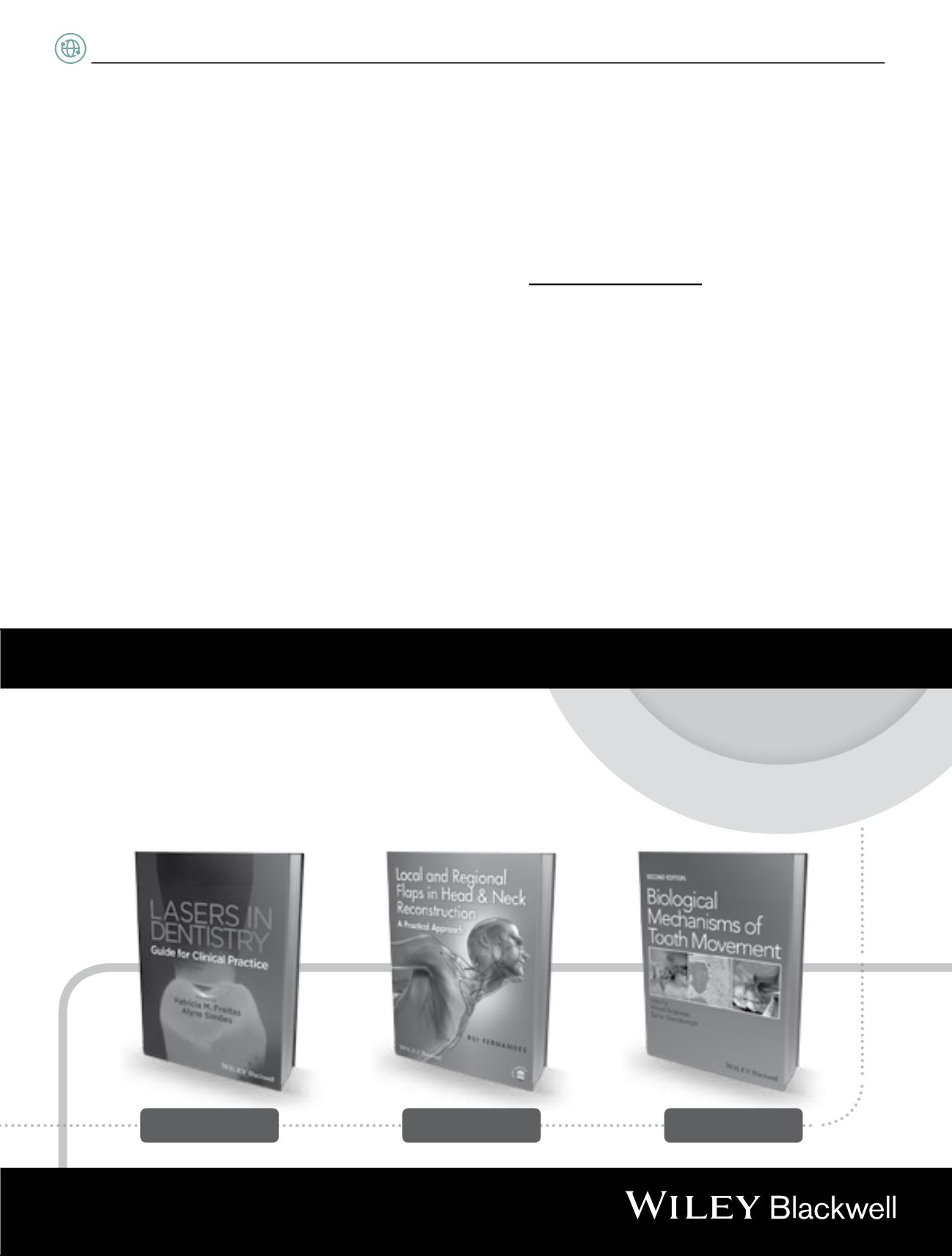

22
|
Volume 2 Issue 2
N
ews and
E
vents
The Bridgework
to a Better Practice
87610
9781118275023
April 2015 | $136.99
9781118340332
December 2014 | $197.99
9781118688878
April 2015 | $237.00
Visit
wiley.ca/go/dentistryto browse our complete library of dentistry
journals, books, and more. Available in print and e-book formats.
Rise in incidence of infective
endocarditis follows drop in
antibiotic use
Using national data on hospital episode statistics,
which capture records for admitted patients,
outpatients, accidents and emergencies, researchers
identified close to 20,000 patients with a primary
diagnosis of IE over about 13 years (8 years before
the guidelines and 5 years afterwards). After the
NICE guidelines were implemented, the incidence of
IE—which had been trending upward—significantly
increased. At the end of the study, researchers
estimated there were almost 35 more cases of IE per
month than would have been expected given historical
trends. Both high-risk and lower-risk individuals were
affected by this increase.
Caution against drawing strong
conclusions
In response to the study,
The Lancet
also published a
commentary
5
that noted the study’s limitations and
cautioned against drawing strong conclusions—similar
to points made by the study authors themselves. “The
follow-up comment noted other potential and plausible
reasons for the increase in incidence of IE, such as an
ageing population and an increased prevalence of
people with intracardiac devices,” says Dr. Quiñonez.
“In addition, one of the limitations of using hospital
discharge data is that it is unknown whether new cases
of IE were the result of oral streptococcal bacteria.”
The study authors call for further research to assess
whether similar trends can be found in other
populations. In light of these findings, NICE announced
an immediate review of its 2008 guideline.
a
References
1.DayerMJ,JonesS,PrendergastB,BaddourLM,LockhartPB,ThornhillMH. Incidenceof infective
endocarditis inEngland,2000–13:aseculartrend, interruptedtime-seriesanalysis.2014;
The
Lancet.EarlyOnlinePublication
;18Nov2014,doi:10.1016/S0140-6736(14)62007-9.
2.National Institute forHealthandClinicalExcellence.Prophylaxisagainst infectiveendocarditis:
antimicrobialprophylaxisagainst infectiveendocarditis inadultsandchildrenundergoing
interventionalprocedures.
NICEClinicalGuidelineNo64.
London:National Institute forHealthand
ClinicalExcellence,2008.
3.CanadianDentalAssociation.CDApositiononpreventionof infectiveendocarditis[accessed2
Dec2014].Available
:http://www.cda-adc.ca/_files/position_statements/infectiousEndocarditis.pdf4.AmericanHeartAssociation.Preventionof infectiveendocarditis:guidelines fromtheAmerican
HeartAssociation:aguideline fromtheAmericanHeartAssociationRheumaticFever,Endocarditis,
andKawasakiDiseaseCommittee,CouncilonCardiovascularDisease intheYoung,andtheCouncil
onClinicalCardiology,CouncilonCardiovascularSurgeryandAnesthesia,andtheQualityofCare
andOutcomesResearch InterdisciplinaryWorkingGroup.Circulation.2007;116(15):1736-54.Epub
2007Apr19.
5.DuvalX,HoenB.Prophylaxis for infectiveendocarditis: let’sendthedebate.
TheLancet
.18Nov
2014,doi:10.1016/S0140-6736(14)62121-8.
















